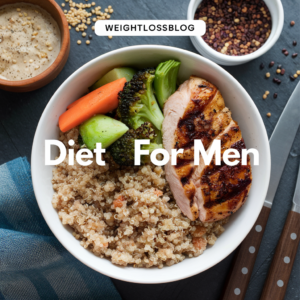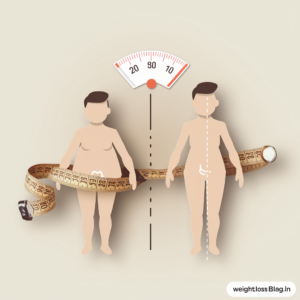How to Lose Weight with the Flexitarian Diet: A Step-by-Step Guide for Beginners
Introduction to the Flexitarian Diet
The Flexitarian Diet is a flexible, plant-forward eating plan that emphasizes the benefits of vegetarianism while still allowing for the occasional inclusion of meat and animal products. As the name suggests, it’s a “flexible” approach to eating, where most meals are plant-based, but there’s room for animal products in moderation. The Flexitarian Diet  was coined by dietitian Dawn Jackson Blatner in her book The Flexitarian Diet, and it’s designed for those who want the health benefits of a vegetarian diet without fully committing to a strict vegetarian or vegan lifestyle.
was coined by dietitian Dawn Jackson Blatner in her book The Flexitarian Diet, and it’s designed for those who want the health benefits of a vegetarian diet without fully committing to a strict vegetarian or vegan lifestyle.
With its emphasis on whole, nutrient-dense foods like fruits, vegetables, legumes, and whole grains, the Flexitarian Diet is a great option for those seeking a healthy and sustainable way to lose weight. In this guide, we’ll explore how the Flexitarian Diet works, its benefits, and tips for creating a successful Flexitarian diet for weight loss.
How the Flexitarian Diet Works for Weight Loss
The Flexitarian Diet works for weight loss by focusing primarily on plant-based foods that are naturally lower in calories and higher in fiber. This emphasis on whole foods helps create a calorie deficit, which is essential for weight loss, while also providing the body with the nutrients it needs to function optimally. By limiting the intake of calorie-dense animal products and processed foods, you’ll naturally consume fewer calories while feeling fuller due to the high fiber content of plant-based foods.
The diet doesn’t have strict rules or calorie counting but encourages replacing meat with plant-based proteins like beans, lentils, and tofu in most meals. You can enjoy meat occasionally, but plant-based foods take center stage. This flexibility allows you to reduce your calorie intake without feeling deprived, making it easier to stick to the diet long-term.
Key Foods in the Flexitarian Diet
- Fruits and Vegetables: Fresh, seasonal fruits and vegetables are the foundation of the Flexitarian Diet, providing essential vitamins, minerals, and fiber. Aim to fill at least half of your plate with vegetables at every meal.
- Whole Grains: Whole grains like quinoa, brown rice, oats, and barley are encouraged, as they provide complex carbohydrates, fiber, and essential nutrients.
- Legumes: Beans, lentils, and chickpeas are excellent plant-based sources of protein and fiber, making them a key component of the Flexitarian Diet.
- Nuts and Seeds: Almonds, chia seeds, flaxseeds, and sunflower seeds offer healthy fats, protein, and essential nutrients like omega-3 fatty acids.
- Plant-Based Proteins: Tofu, tempeh, and seitan are versatile, plant-based protein options that can easily replace meat in many dishes.
- Occasional Meat and Animal Products: While the Flexitarian Diet emphasizes plant-based foods, it allows for occasional consumption
 of meat, poultry, fish, eggs, and dairy. The key is moderation—meat should complement the meal, not be the star of it.
of meat, poultry, fish, eggs, and dairy. The key is moderation—meat should complement the meal, not be the star of it.
Benefits of the Flexitarian Diet for Weight Loss and Health
Following a Flexitarian Diet offers numerous health benefits, many of which are closely related to weight loss. Here are some key advantages:
1. Promotes Sustainable Weight Loss
The Flexitarian Diet promotes weight loss by encouraging the consumption of plant-based foods, which are naturally lower in calories and higher in fiber. This makes it easier to create a calorie deficit, which is essential for losing weight. Additionally, the high fiber content of plant-based foods helps you feel full and satisfied, reducing the likelihood of overeating or snacking on unhealthy foods.
2. Improves Heart Health
Plant-based diets are known to improve heart health by lowering cholesterol levels and reducing blood pressure. The Flexitarian Diet encourages the consumption of heart-healthy foods like fruits, vegetables, whole grains, and nuts, which are rich in antioxidants, fiber, and healthy fats. This can help reduce the risk of heart disease, stroke, and other cardiovascular conditions.
3. Reduces the Risk of Chronic Diseases
A diet rich in plant-based foods is associated with a lower risk of chronic diseases such as type 2 diabetes, certain cancers, and obesity. By incorporating more whole foods and reducing the intake of processed and red meats, the Flexitarian Diet supports overall health and helps protect against these conditions.
4. Flexible and Sustainable
One of the greatest benefits of the Flexitarian Diet is its flexibility. Unlike more restrictive diets, the Flexitarian Diet allows for occasional indulgences, making it easier to stick to in the long term. You don’t have to give up meat entirely—you can still enjoy your favorite animal-based foods in  moderation while focusing on plant-based meals most of the time. This makes the Flexitarian Diet a more sustainable approach to healthy eating.
moderation while focusing on plant-based meals most of the time. This makes the Flexitarian Diet a more sustainable approach to healthy eating.
5. Environmentally Friendly
The Flexitarian Diet has environmental benefits as well. By reducing your consumption of animal products, you’re helping to lower your carbon footprint and reduce the demand for resource-intensive animal farming. This diet aligns with both personal health goals and environmental sustainability.
Potential Drawbacks of the Flexitarian Diet
While the Flexitarian Diet offers many benefits, it’s important to be aware of potential challenges:
1. Risk of Nutrient Deficiencies
Because the Flexitarian Diet limits animal products, there is a risk of certain nutrient deficiencies, such as vitamin B12, iron, and omega-3 fatty acids, which are more readily found in animal products. It’s important to include fortified foods or supplements, especially for vitamin B12, and focus on plant-based sources of iron, such as leafy greens, lentils, and seeds.
2. May Require Meal Planning
To ensure you’re getting all the necessary nutrients, the Flexitarian Diet may require careful meal planning. It’s important to create balanced meals that provide enough protein, healthy fats, and essential vitamins and minerals. This can take time and effort, especially if you’re new to plant-based eating.
3. Difficult in Social Situations
Like any diet that limits certain foods, the Flexitarian Diet may present challenges in social situations, especially when dining out or attending events where plant-based options are limited. However, the flexibility of the diet allows for occasional indulgences, which can make it easier to navigate these situations without feeling restricted.
Tips for Success on the Flexitarian Diet
To maximize your success on the Flexitarian Diet and achieve your weight loss goals, consider these practical tips:
1. Start with a Simple Meal Plan
When transitioning to a Flexitarian Diet, start with a simple meal plan that includes easy-to-prepare meals. Focus on whole foods like fruits, vegetables, legumes, and whole grains, and gradually reduce your intake of meat and processed foods. You can begin by having one or two meat-free days per week and increasing the frequency over time.
2. Prioritize Plant-Based Proteins
Protein is an essential nutrient for weight loss and muscle maintenance. Make sure to include plant-based protein sources like beans, lentils, tofu, and tempeh in every meal to ensure you’re meeting your protein needs while reducing your reliance on animal products.
3. Experiment with Meat Alternatives
If you’re new to plant-based eating, try experimenting with meat alternatives like tofu, tempeh, seitan, or plant-based meat substitutes. These options can provide a similar texture and flavor to meat, making it easier to transition to a more plant-based diet without feeling deprived.
4. Plan for Flexibility
The beauty of the Flexitarian Diet is its flexibility, so don’t stress about being perfect. It’s okay to have meat or animal products occasionally—what matters most is that the majority of your meals are plant-based. Allow yourself to enjoy your favorite foods in moderation, and focus on making sustainable changes that you can stick to in the long term.
5. Focus on Whole, Unprocessed Foods
While there are plenty of processed vegetarian options available, it’s best to focus on whole, unprocessed foods like fresh vegetables, legumes, and whole grains to maximize the health benefits of the Flexitarian Diet. These foods provide more nutrients and are generally lower in calories, making them ideal for weight loss.
Scientific Evidence Supporting the Flexitarian Diet
Several studies support the effectiveness of the Flexitarian Diet for weight loss and overall
health. A study published in the journal Obesity Reviews found that individuals who followed a plant-based diet, including flexitarian diets, experienced greater weight loss compared to those who followed a more traditional diet. The study also highlighted the positive effects of plant-based diets on cholesterol levels and cardiovascular health.
Another study published in the Journal of Nutrition concluded that flexitarian diets are associated with a reduced risk of chronic diseases such as heart disease, type 2 diabetes, and certain cancers. These findings support the health benefits of a flexible, plant-forward eating approach.
Who Should Try the Flexitarian Diet?
The Flexitarian Diet is a great option for individuals who:
- Want to lose weight while improving overall health and well-being.
- Are interested in reducing their meat consumption but don’t want to fully commit to a vegetarian or vegan diet.
- Prefer a flexible eating plan that allows for occasional indulgences without feeling restricted.
- Want to support environmental sustainability by reducing their consumption of animal products.
Who Should Avoid the Flexitarian Diet?
While the Flexitarian Diet is suitable for most people, it may not be the best choice for:
- Individuals with specific medical conditions that require higher protein or nutrient intake from animal products.
- People who struggle with portion control or need more structured meal guidelines.
Conclusion
The Flexitarian Diet is a flexible, plant-forward approach to weight loss that offers numerous health benefits while allowing for occasional indulgences. By focusing on whole, nutrient-dense foods and reducing your consumption of animal products, you can achieve sustainable weight loss and improve your overall health. Whether you’re motivated by health, ethics, or environmental concerns, the Flexitarian Diet provides a balanced, flexible approach to healthy eating.